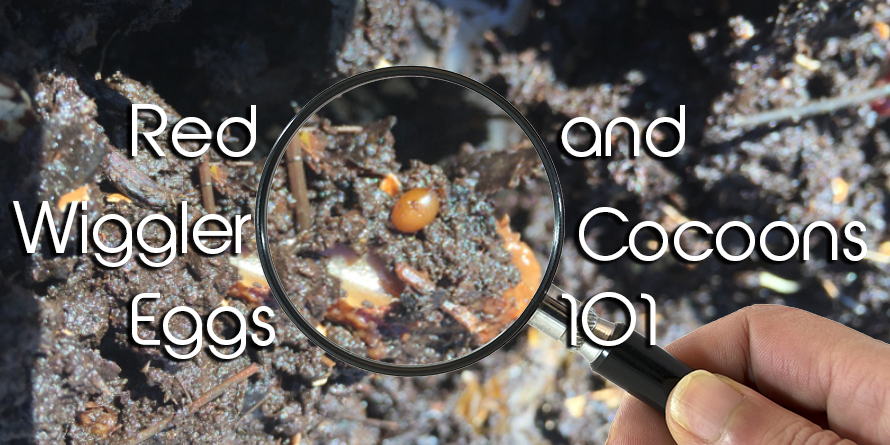Why Choose Red Wiggler Express for Reliable and Convenient Fishing Bait?
Red Wigglers: The Unsung Heroes of Organic Waste Recycling
Red wigglers, or Eisenia fetida, serve as critical representatives in the organic waste recycling procedure, transforming discarded products into beneficial vermicompost. As the globe increasingly looks for services to combat waste buildup and enhance agricultural performance, comprehending the role of these worms ends up being crucial.
What Are Red Wigglers?
The amazing strength of red wigglers, clinically known as Eisenia fetida, emphasizes their essential duty in organic waste recycling. These tiny, reddish-brown earthworms are usually found in decaying raw material, such as compost heap and manure heaps. Lake Hickory Bait. Unlike other earthworm varieties, red wigglers flourish in nutrient-rich settings and are highly reliable at breaking down organic products, making them important for vermicomposting

(Red Wiggler Express)Along with their duty in waste decrease, red wigglers add to soil health by enhancing soil framework and oygenation via their delving activities (Lake Hickory Bait). Their presence in composting systems not only improves decay prices yet additionally promotes a sustainable technique to waste administration, highlighting their value in ecological conservation efforts
Benefits of Composting With Worms
Composting with worms, particularly red wigglers, provides various advantages that enhance both waste management and soil health. These worms effectively break down organic waste, transforming it right into nutrient-rich vermicompost that improves dirt. This process increases decay, enabling a quicker recycling of cooking area scraps and other natural products compared to conventional composting methods.
Additionally, the vermicompost generated by red wigglers is including beneficial microbes, which aid enhance soil framework, oygenation, and wetness retention. This enhances the total health and wellness of plants, promoting vigorous development and boosted yields in yards and farming settings. The use of worms in composting decreases the manufacturing of greenhouse gases, such as methane, contributing to an extra sustainable waste monitoring system.

Exactly How to Beginning Vermicomposting
Developing a vermicomposting system is a straightforward process that can yield significant benefits for both waste management and dirt enrichment. To start, pick a suitable container, such as a plastic bin or wooden box, with sufficient ventilation holes to guarantee appropriate air flow. The measurements must preferably be about 2 feet by 3 feet, enabling adequate area for the worms to prosper.
Following, prepare bed linen material, which can consist of shredded newspaper, cardboard, or coconut coir. This bedding ought to be moistened to produce an appropriate habitat for the worms. Once the bedding remains in area, present red wigglers (Eisenia fetida) right into the bin, normally around one extra pound of worms for each square foot of area.
Following the placement of worms, include natural waste, Lake Rhodhiss Bait such as vegetables and fruit scraps, coffee grounds, and crushed eggshells. Stay clear of including dairy products, meat, or oils, as these can produce odors and attract parasites. Ultimately, place the bin in a shaded, temperature-controlled area to keep optimum conditions for worm task. With these actions, you will successfully start a vermicomposting system that contributes to lasting waste administration and improves your soil.
Maintaining a Healthy Worm Container
(Lake Hickory Bait)Keeping a worm container flourishing calls for routine focus and care to make certain the health and wellness of the red wigglers and the performance of the composting process. Correct maintenance starts with monitoring the wetness degrees; the bin needs to perspire however not saturated. A good general rule is to maintain an uniformity comparable to a wrung-out sponge.
Aeration is critical. Gently blending the bed linens and food scraps every few weeks avoids compaction and makes certain that all worms have access to oxygen. Furthermore, it is necessary to feed the worms appropriately. A balanced diet plan of vegetables and fruit scraps, coffee premises, and crushed eggshells ought to be used in small amounts to avoid overfeeding, which can result in odors and bugs.
If the bin ends up being too warm or cool, the worms might end up being stressed. By diligently taking care of these aspects, one can preserve a robust and effective worm container.
Influence On Sustainable Living
The successful upkeep of a worm bin not only profits the health and wellness of red wigglers but also adds dramatically to sustainable living practices. By reusing natural waste, such as kitchen area scraps and yard particles, red wigglers assist divert substantial quantities of material from landfills. This decrease in waste not just decreases greenhouse gas exhausts however also decreases the ecological burden related to waste monitoring.
Furthermore, the castings generated by red wigglers function as a nutrient-rich organic plant food, enhancing dirt health and advertising plant growth. This all-natural option to chemical plant foods supports sustainable agriculture and gardening techniques, decreasing dependence on synthetic inputs that can harm communities. Furthermore, worm composting cultivates understanding of waste monitoring, encouraging people and communities to embrace even more sustainable routines.

Final Thought
In recap, red wigglers offer as essential factors to natural waste reusing via their reliable disintegration of natural products. Their capability to create nutrient-rich vermicompost improves soil health and wellness and supports sustainable agricultural practices. By incorporating vermicomposting right into waste monitoring strategies, people and areas can significantly decrease waste while promoting environmental sustainability. The role of Eisenia fetida in promoting healthy environments underscores the value of these microorganisms in accomplishing sustainable living and improving dirt fertility.